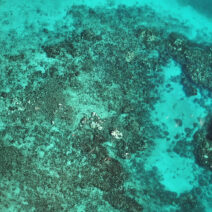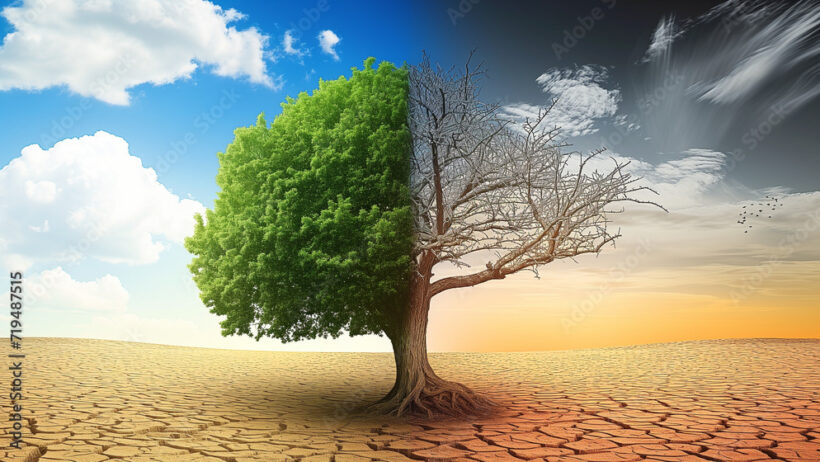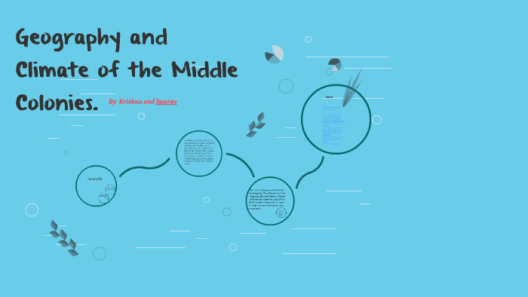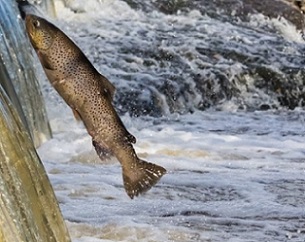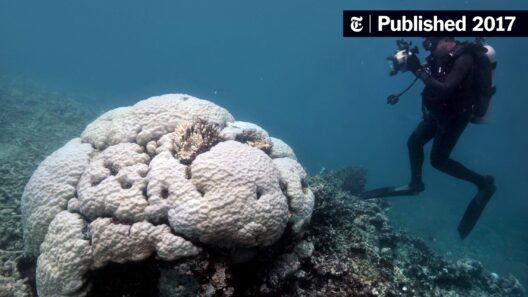As the sun rises and sets over the vast blue expanse, the ocean continues to serve as both a mirror and a canvas, reflecting the beauty of our planet while simultaneously bearing witness to its peril. Often referred to as the lifeblood of Earth, the ocean is a complex tapestry of life, replete with intricate ecosystems that harbor a plethora of marine organisms. Yet, beneath the surface lies a grim reality: the ocean is in crisis, shaped and reshaped by the tumultuous forces of global warming. This metamorphosis is felt not only in the vibrant coral reefs, often described as the “rainforests of the sea,” but also in the migratory patterns of species, temperature fluctuations, and the chemical composition of marine habitats.
The narratives woven within the depths of the ocean reveal a startling transformation. One can liken the warming of the ocean to an artist altering the original hues of a masterpiece; vibrant colors fade, whilst new and often incongruous shades emerge. Marine heatwaves, a direct consequence of climate change, have warmed ocean waters, pushing temperatures to unprecedented levels. These heat anomalies, akin to fever in a living being, disrupt delicate ecosystems, leading to coral bleaching and mass die-offs of marine organisms. The bleaching event serves as a poignant metaphor for loss, where the once-thriving coral reefs become ghostly remnants of their former glory.
Among the most visually striking effects of global warming is the phenomenon of coral bleaching. Corals, while seemingly inert, are vibrant organisms that live in symbiotic harmony with algae, which provide them with the very colors that make living reefs a spectacle of nature’s artistry. However, as ocean temperatures continue to climb, this symbiotic relationship is jeopardized. The stressed corals expel the algae, leading to a stark white skeleton devoid of life. This ghostly presence belies an urgent warning: if humanity fails to curb greenhouse gas emissions, these underwater cities could dissolve into spectral echoes of their former selves.
In addition to the plight of coral reefs, the escalation of ocean acidity poses a substantial threat to marine life. Carbon emissions do not merely warm the atmosphere; they infiltrate the oceans, altering the pH balance and leading to what may be termed an existential crisis for shelled organisms. Creatures such as mollusks and crustaceans, whose very existence relies on calcium carbonate structures, face a daunting future. As waters acidify, their ability to form shells diminishes, akin to sand slipping through one’s fingers. The once-thriving fisheries, upon which countless communities depend for sustenance and economic stability, now stand on precarious ground.
The melange of warming waters and acidification harmonizes to create a cascade of effects that reverberate throughout marine food webs. Keystone species, which hold ecosystems together, are now at risk. For example, the decline in plankton populations—tiny organisms that serve as the foundation of most oceanic food chains—can instigate a domino effect, impacting everything from small fish to the majestic whales that breach the ocean’s surface. The entire marine ecosystem begins to resemble an intricate clockwork mechanism, its delicate gears grinding to a halt, as interdependencies unravel in slow motion. One cannot help but ponder: the ocean, so vast and seemingly impervious, is remarkably fragile.
Yet the crisis does not merely abide in troubles beneath the waves; it extends to the shores, threatening coastal communities that are intricately tied to the ocean’s bounty. Rising sea levels, a direct consequence of melting polar ice and thermal expansion, erode coastlines and inundate habitats. From quaint fishing villages to metropolitan areas, the encroaching tides forecast looming challenges. Fauna and flora that have long called these coastal regions home face displacement, further altering local ecosystems and sparking competition for resources.
In this rapidly changing landscape, marine species are forced to adapt, emigrate, or, tragically, face extinction. Many fish are on the move, seeking cooler waters and shifting their ranges poleward. Such migrations exemplify the resilience of nature but also signal a significant upheaval. Commercial fisheries are impacted, making the delicate dance between ecological balance and human commerce ever more precarious. Fish once abundant in specific regions may now become scarce, leading to economic ramifications and food insecurity for communities reliant on these resources.
Moreover, the interactions between species are becoming increasingly unpredictable as the building blocks of marine life are altered. This can result in invasive species flourishing in new environments, outcompeting native inhabitants and disrupting established ecosystems. The ocean becomes an ever-changing stage, with old actors replaced by newcomers, all the while performing a play that many are ill-prepared to understand or manage.
Pivotal to this oceanic saga is our responsibility as stewards of the Earth. Now more than ever, concerted efforts must be undertaken to mitigate climate change and restore the health of our oceans. Initiatives such as marine protected areas, sustainable fishing practices, and restoration of coastal habitats present pathways to resilience. Moreover, palpable engagement in environmental advocacy can augment collective awareness and drive meaningful change. The paradigm shifts required demand not merely individual action but collaborative global efforts, underscoring the interconnectedness of mankind’s fate with that of the ocean.
To envisage a future where marine habitats flourish, it is imperative to embrace a multispecies ethic that acknowledges the shared fate of all life. As guardians of our planet, the onus is on humanity to reforge its relationship with the ocean. It remains our duty to protect this vast oceanic treasure from temporary challenges, lest we lose the irreplaceable beauty and biodiversity it harbors. As we look toward the horizon, the question lingers: what legacy shall we leave for the generations that follow? The tide is ours to turn.

